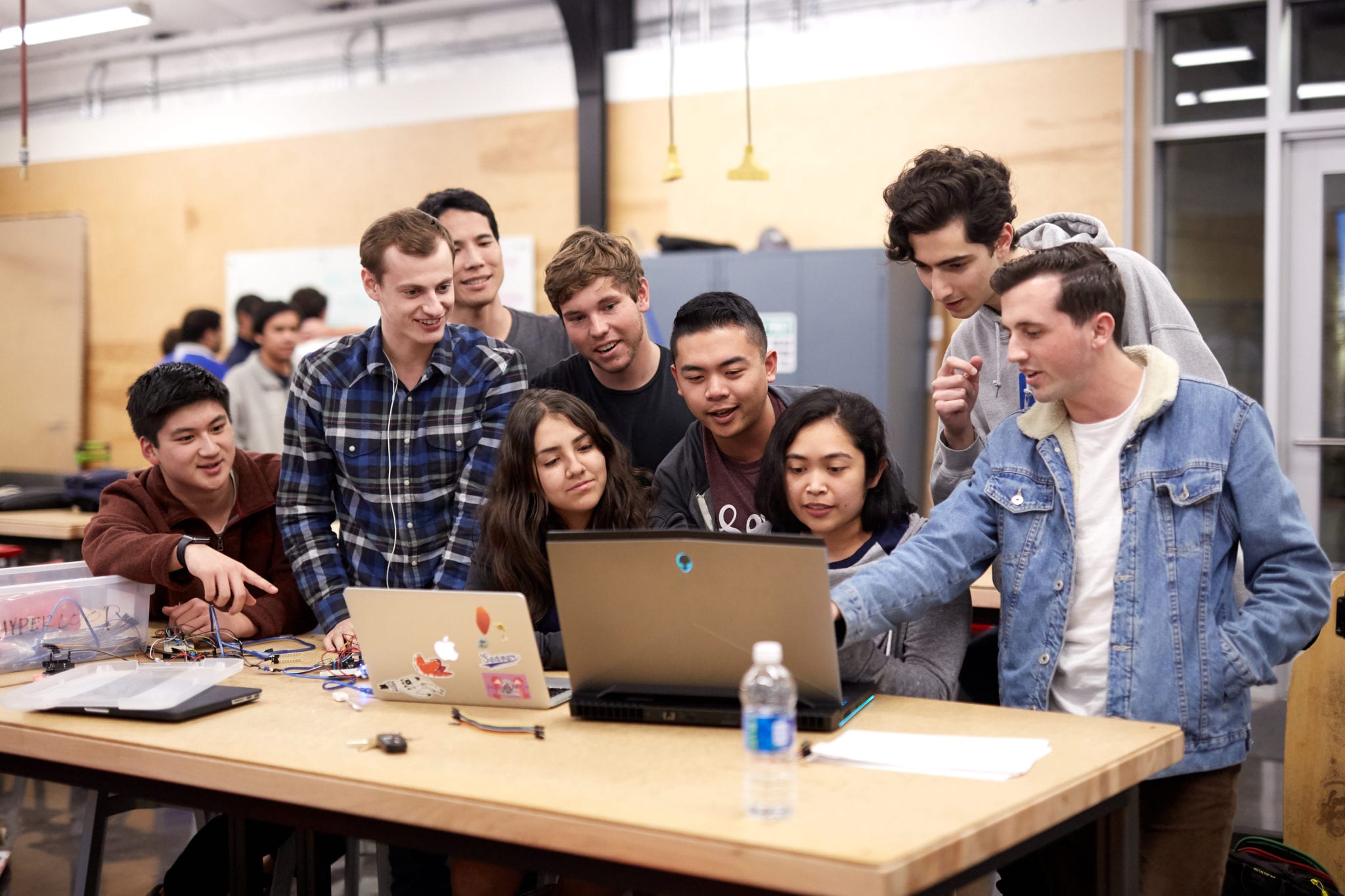
An interdisciplinary team of more than 70 Loyola Marymount University students competed in the SpaceX Hyperloop Pod Competition for the first time this year, collaborating to design a self-propelled transport pod that can travel in an ultra-low pressure hyperloop tube.
The annual SpaceX competition challenges university teams to contribute to the open-source hyperloop concept, a form of high-speed ground transportation. “The broad scope of the project is to take this general concept that’s not really well formed yet, throw it out into the wind, and let some young aspiring engineers get their hands on it and see what we can do with it,” said team leader Anthony Keba, a junior computer science major, whose enthusiasm and dedication many credit as the team’s driving force. “You’re basically taking all of the challenges of building a spacecraft and bringing them down to earth.”
The LMU Hyperloop Team is comprised of undergraduate students from a broad range of disciplines, with sub-teams devoted to mechanical engineering, electrical engineering, telemetry and business. The interdisciplinary environment was a huge draw for business team captain Lauren Kenes, a senior entrepreneurship major. “It’s really valuable to be able to reach out and work with people from other majors,” she said. Her group is working on securing sponsorships and material donations so the team can build a functional prototype.
“It’s our first year, so we’re starting from scratch,” said Andrew Narag, a sophomore mechanical engineering major working on the pod’s suspension system. He explained that the team took a practical approach to designing the pod’s structure and systems, drawing on team members’ existing knowledge and experience as a starting point. “We had to consider the resources available to us and what would be feasible with the people and knowledge we already have,” said Narag.
For some team members, participation has been a crash course in real-world engineering. “This is definitely giving me experience on how to apply what I’ve learned and also how to solve certain problems,” said Ashley Agrello, a freshman engineering physics major who is researching materials for the pod’s shell. “You literally have to take every variable into account, even if you haven’t learned it yet, so you’re learning as you go.”
“One of the biggest advantages that I’ve heard from people on the team is that they’re applying the skills they’ve learned in the classroom in a way that’s applicable to their careers, instead of just theoretical or hypothetical situations,” Keba added. “Now that they’ve applied it in a meaningful way, they understand the holistic picture of how these equations and theories fit together.”
The LMU Hyperloop Team was one of just 47 teams worldwide to make it to final design phase of the 2018 competition. They’re already moving forward with plans for next year’s competition, aiming to perfect their design and qualify to race their pod at SpaceX’s Hawthorne headquarters. “We’ve learned a huge amount,” said Keba. “We’re going to keep moving forward with the experience and knowledge we have now.”



